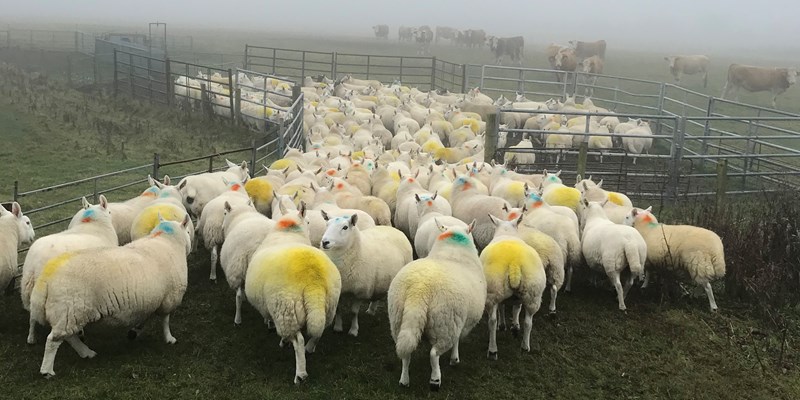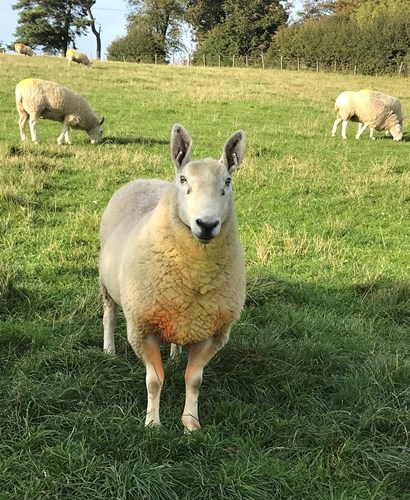
Today we’re looking back at pre-lambing work. People often ask me what the different coloured marks on sheep are for. The answer is, for an easy management tool for the farmer!
As you can imagine, although each sheep looks slightly different, if you have a few hundred of them together it’s not too easy to pick out a specific one, so each farm will have their own colour system for different jobs at different times of the year. For instance, on our farm, if we have had to give a sheep any kind of medication, because it’s been poorly, we usually put a green mark on the back of its neck. We also keep a record of this in a medicine book, detailing the specific animal tag number, what was wrong with it as well as when, what & how much medication it has had. The coloured mark means that we can spot it easily from a distance and know that it has been treated.

When it comes to lambing, the first coloured marks will be made at tupping time and will be applied to the ewes by the tups rather than us!
Back in October, before we introduced the tups to the ewes, we put a special kind of paint, called raddle, on the tups’ brisket (between his front legs). This means that when he mates with a ewe, some of the paint will rub off onto her and we will be able to see it. By changing the colour of the raddle each week we should be able to work out, roughly, which ewes will lamb within the 1st, 2nd, 3rd or 4th week of lambing.
We use yellow raddle for the first week, then orange, then green and finally blue. By the time the tups are taken away from the ewes we have a field full of rainbow sheep!
After this the ewes are left in peace to graze away in the fields. Although we check them regularly, we do not want to handle them overly much in the early stages of pregnancy as the stress can sometimes cause them to lose their lamb(s).
We can now start working out dates for other jobs that need to be done throughout the pregnancy from giving vaccines to scanning the sheep. The ewes will have an ultrasound scan, just like a human, so we can establish how many lambs each ewe is carrying. We will have a closer look at this next week so make sure you don’t miss it!
